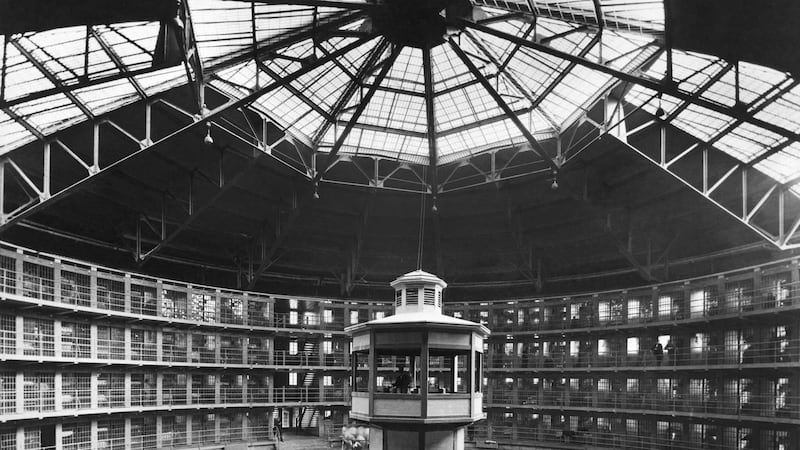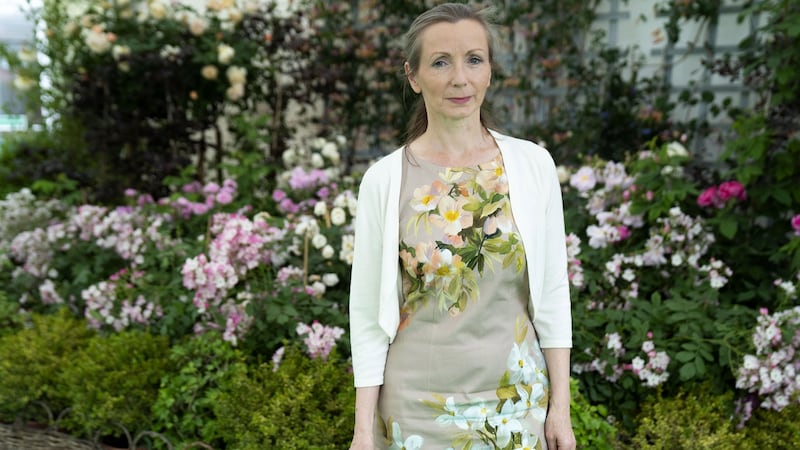“Don’t look for meaning in the words. Listen to silences,” Samuel Beckett once said. Unquestionably, silence is an indispensable resource for communication; human interaction is not possible without it.
Yet, its primary function goes beyond being a mere vehicle for expression, as it can turn into an effective tool to regulate the dynamics of dominance and submission. Put at the service of power, silence can be a potent device to control society, becoming a means for disempowerment as much as a strategy for survival. From the Orwellian apparatus devised in the classic 1984, which threatened the population with the warning, “Big Brother is watching you”, to more modern and sophisticated forms of surveillance (or, more precisely, dataveillance and biometrics), privacy concerns, freedom and truth are urgent issues in our contemporary global world dominated by information technology.
Concerns of this kind were raised already in the 1970s by Michel Foucault in his influential works Discipline and Punish and History of Sexuality. In these groundbreaking volumes, he introduced the concept of biopower, which he defined as a “technology of power centred on life” that operates at the level of the body and can potentially exert a regulatory control on the people.
Biopower thus acts on two spheres: the disciplines on the body, which mould the individual to make him/her fit into society; and the control of population. According to Foucault, power is then wielded by society in ways that exceed the apparatus of the state, surfacing, not as the result of punishment, but of control. And this form of political control, mainly exerted by means of surveillance, of oneself and of others, regulates individual and societal behaviour through the discipline of silence.
Such is case of the Northern Irish suffocating community portrayed in Anna Burns’ award-winning Milkman (2018), whose narrator warns readers that, “words didn’t have to be disputed or undisputed, didn’t have to be spoken”, a statement that echoes the oppressive years of the Troubles.
Milkman starts retrospectively, when an 18-year-old narrator, only known as “middle sister” or “middle daughter”, recalls a traumatic experience that took place two decades before, as a result of a rumour that connected her to a much older married man. Although the novel refuses to name characters or locations, the contextual references to the Troubles, “the great Seventies hatred”, the tribalism and segregation of the community, the bomb scares, the violence and the street battlefields betray the setting as being Belfast.
While Milkman defiantly targets at what initially appears to be sexual harassment, resonating with the #MeToo movement and female consent, it further discloses layers and layers of more subtle mechanisms of sociopolitical (self-)control and surveillance. How power is achieved, used and exercised to oppress people will be the source of much distress. Rumours, manufactured truths, and sectarianism are the ingredients that endanger the life of a young and largely defenceless protagonist, whose inner voice is silently raised to challenge the divided community.
Before the reader can fully grasp what lies beyond the apparent harassment of the protagonist by a paramilitary stalker known as Milkman, the weight that gossip and hearsay have in this tribal community gives an idea of how control is exerted on the minds of the people. The narrator explains that “within the context of our intricately coiled, overly secretive, hyper-gossipy, puritanical yet indecent, totalitarian district”, she has developed the habits of reading while walking and of jogging almost compulsively every day, so that she can remain uncommitted to anything going on around her, including a “maybe-relationship” with a “maybe-boyfriend”. Nevertheless, in this secluded society dominated by the power of the gaze and where anything can be taken as a political statement, such abnormal behaviour turns her into a dangerous “beyond-the-pale” subject.

In order to further develop his theories, Foucault relied on the metaphor of the panopticon, a penitentiary model designed by philosopher Jeremy Bentham in the 18th century. Bentham devised an annular building with a watchtower in the middle that would serve to control inmates, who would be placed in cells surrounding the structure, so that each of them could be monitored without them being aware of it. Foucault found his architecture extremely useful to explain the functioning of power to discipline society and applied it to any kind of institution that wields this type of order and control. In Discipline and Punish he explained that its effect was to “to induce in the inmate a state of conscious and permanent visibility that assures the automatic functioning of power”.
As an experimental laboratory of power, the modern panopticon represents the power-knowledge societies where individuals are under constant surveillance. Drawing on these ideas, it is not difficult to see how reading Milkman in light of Foucault’s theory on the genealogy of power proves useful to understand the author’s attempt to disclose how the gaze is repressively interiorized and normalized to the point of turning individuals into docile bodies.
Although Milkman is set in an unnamed town, reviewers have recognized in it the Catholic district of Ardoyne, where the author grew up. The novel clearly reflects on what it means to live in a war zone and evokes the author’s own experiences through the Troubles when there were riots and violence in the streets on a daily basis. However, the local is only an excuse to represent the universal, targeting any totalitarian system set in dystopian times ruled by fear as its main instrument of control.
The first pages of the novel are clear in this respect, focusing on the imprisonment of the protagonist in a polarized society of the “us” versus “them”, whose behaviour is regulated by a discipline based on individual and social (hyper)vigilance, a system not so different from Bentham’s prison. The community acts as a true panopticon, where people police each other, making everyone feel under constant surveillance. The result is that, not knowing when one is really being observed or not, people are always on guard, involved in their own vigilance and (self)regulating their behaviour so as to conform to the norms and avoid the consequences of transgression.
Thus, the success of the panopticon does not actually lie in establishing relations of dominance and submission, but of discipline, so that the individuals’ main concern is to abide with what is expected from them. That is how, by inferring the subtle and dangerous power that lies beyond the policing of others, the protagonist adopts the habit of reading-while-walking, a transgressive defence mechanism and a form of evasion. She is clear about it: “not wanting to know … was exactly what my reading-while-walking was about. It was a vigilance not to be vigilant”.
Interestingly, she only reads 19th-century novels because she dislikes the 20th century. These were times immortalized by Seamus Heaney in his well-known poem “Whatever you say, say nothing”, which endorses silence as a means of protection, since anything could be interpreted as a political statement. In a seemingly dutiful nod to Heaney, the protagonist explains that “rarely did I mention anything to anybody. Not mentioning was my way to keep safe.”

However, in Burns’ society, the protagonist’s ostracized silence, rather than keeping her safe, labels her as a “beyond-the-pale” subject. The real paramilitary violence that threatens the community is taken for granted, “the only time you’d call the police in my area would be if you were going to shoot them, and naturally they would know this and so wouldn’t come”, while the more real and potential danger lies in ambiguity, in her in-betweenness. For this suspicious community, the fear of the unknown, of the other, is their most powerful tool. That is why the protagonist’s best friend warns her: “You are not inferable. You cannot be deduced – and they don’t like that. You’re stubborn, friend, sometimes stupid, incredibly stupid, for you prepossess people with your lack of give not to like you. That is dangerous. What you don’t offer – especially in volatile times – people will make up for themselves”.
The protagonist’s liminality in the text is ubiquitous, reinforcing her identification in the text as “middle sister” and as a “maybe-girlfriend” in a “non-couple couple”. Her self-imposed silence is a form of discipline that eventually transforms her into a docile body: “Thus my feelings stopped expressing. Then they stopped existing. And now this numbance from nowhere had come so far on in its development that along with others in the area finding me inaccessible, I, too, came to find me inaccessible”.
But silence acquires even more subtle meanings. While Milkman explores the self-conscious mind of a victim of harassment, the title of the novel bears the name of the dangerous and enigmatic paramilitary who is more a shadow than a physical presence in the text, making his sinister stalking terrifying. Ironically, when at the end of the novel he is killed by mistake by the state forces, she finds out that this was his real name, not a nickname, positioning him as the only individualized figure of the text.
Additionally, groupthink emerges as another form of silence, a technology of power that helps validate rumour. When the protagonist tells her mother that there is nothing between herself and Milkman, the latter reacts aggressively and accuses her of lying because the community has invented an alternative truth that fits their role of policing others and identifying offenders. This is how she is caught in a double-sided condition: a victim of a rumour that conceals a sexual harassment, while inspiring fear and admiration in the local women because of her connection to a powerful paramilitary man.
Provoking the anger of “tablets girl”, she is poisoned and is unable to receive medical care because calling an ambulance or going to hospital involves having to answer questions and fill in forms that might lead to accusations of informership, the transgressive act par excellence among the community.
Amazingly, the novel ends in an uplifting manner. The protagonist is liberated from the sexual predation, the harassment and the gossip when Milkman is killed, and she can resume jogging and breathing in the morning air. Humour and absurdity surface thus as redemptive counterpoints against the oppressive and tribal milieu, against a pathological silence that contrasts with the protagonist’s arresting eloquence and musings – if only through narration.
With this novel, Burns has attempted to unearth the silences endured by a Northern Irish society afflicted by multiple forms of violence, oppression, repression and deprivation. Even though Milkman is set in the 1970s, the novel speaks about the present with the author cleverly problematising the third millennial world, governed by the dynamics of biopower and more sophisticated panopticon scenarios that include social media and digital surveillance.
Without doubt, the way people are nowadays exposed to the outside world, both revealing their identities to an unknown realm and engaging in intimate interactions with unknown others, is part of a knowledge-power society whose infinite webs of interconnection reveal how control is exercised in contemporary society. Milkman has successfully raised all these issues, while staging the Northern Irish Troubles as the backdrop of a more global scenario.
Marisol Morales-Ladrón lectures at the University of Alcalá











